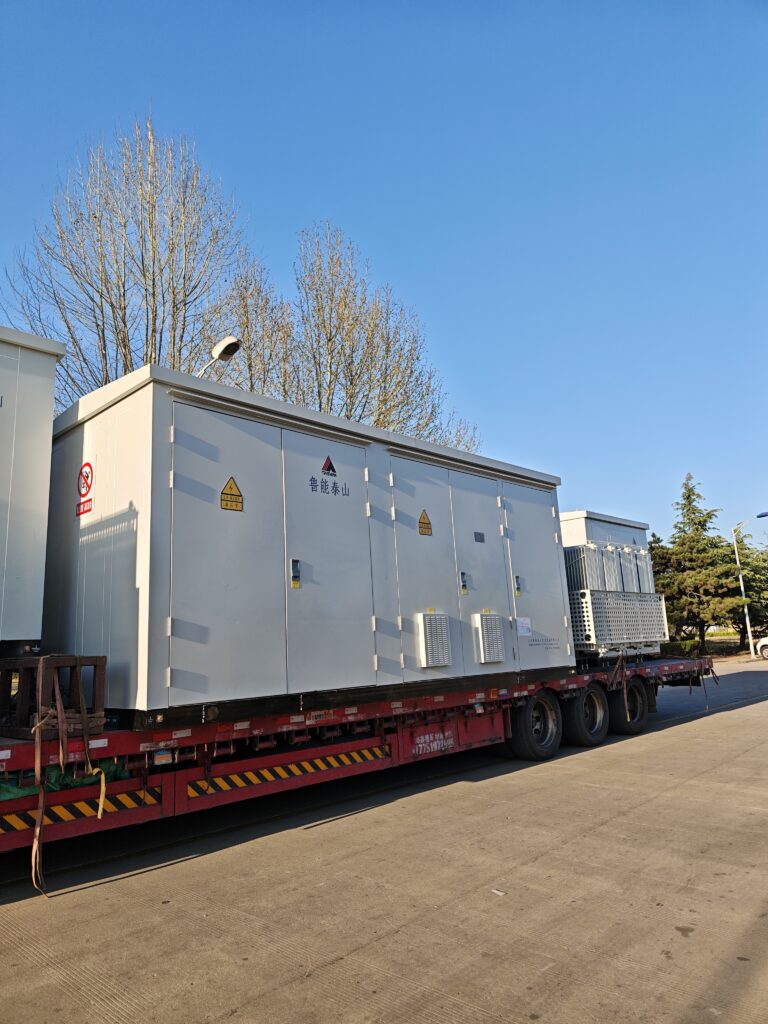Box transformers (or compact substations) are crucial in the efficient distribution of electricity, especially in locations where space is limited, safety is a concern, and aesthetics matter. These transformers are typically housed in robust enclosures that protect the transformer components from environmental factors, making them ideal for urban, industrial, and even residential applications. Their compact size and versatility provide several advantages over traditional transformer designs, especially when deployed in specific applications such as commercial buildings, industrial plants, urban areas, and remote locations.
In this article, we will discuss the advantages of box transformers in various specific applications, highlighting how their design and functionality make them well-suited to different environments and usage needs.
What is a Box Transformer?
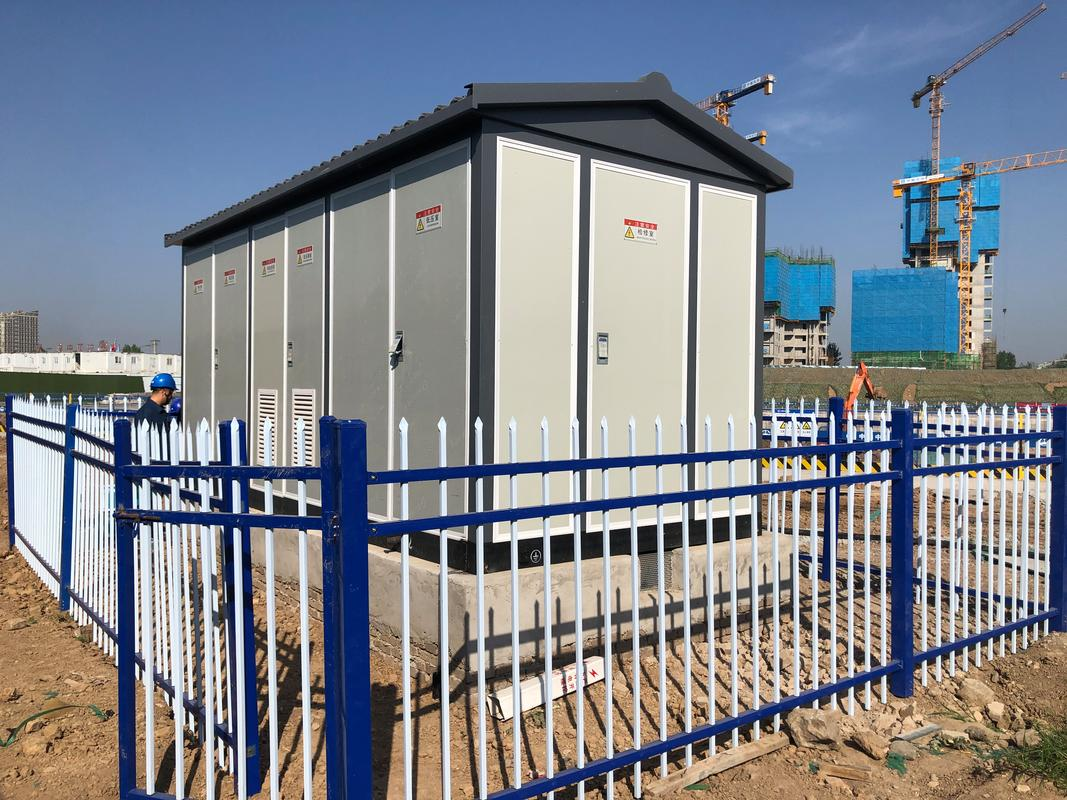
A Box Transformer is a type of distribution transformer that is enclosed in a protective metal box, designed to step down high-voltage electricity to lower, usable voltage levels for residential, commercial, and industrial applications. This compact and robust design makes box transformers a popular choice for areas with space constraints or environments that require additional protection for electrical equipment. Box transformers are widely used in urban power grids, industrial zones, and other distribution networks where ease of installation and safety are paramount.
This article provides a detailed overview of box transformers, including their design, functionality, and applications in modern electrical grids.
What Sets Box Transformers Apart?
Box transformers are distinguished by their enclosed design, which offers several advantages in terms of both safety and durability. Unlike traditional open-frame transformers, box transformers are housed in a weatherproof, often tamper-resistant metal casing, making them more suitable for installation in public or high-traffic areas.
Key Features of Box Transformers:
-
Enclosed Metal Box: The defining characteristic of a box transformer is its enclosed metal casing, usually made from steel or aluminum alloys. This casing protects the internal components of the transformer from environmental factors such as moisture, dust, and physical damage.
-
Compact Design: Box transformers are typically more compact than conventional transformers, making them ideal for installation in locations where space is limited or where aesthetics are a concern.
-
Weather and Vandalism Protection: The enclosure provides protection from harsh weather conditions like rain, wind, and snow, and helps prevent unauthorized access or tampering, ensuring the transformer’s integrity and safety.
-
High Voltage to Low Voltage Conversion: Like other transformers, box transformers step down high-voltage electricity to lower, more manageable voltage levels suitable for use in homes, factories, and businesses.
How Does a Box Transformer Work?
A box transformer works based on the same principles as other distribution transformers but is designed for greater durability and ease of installation. It consists of a core, primary and secondary windings, and an insulating medium (such as oil or air). Here’s a brief breakdown of the operation:
-
High-Voltage Input: Electricity from the power grid enters the transformer at a high voltage level, typically in the range of several thousand volts.
-
Magnetic Induction: The high-voltage current flows through the primary windings, generating a magnetic field that induces a lower voltage in the secondary windings.
-
Low-Voltage Output: The induced current in the secondary windings is a stepped-down version of the high-voltage input, and is delivered at a lower, usable voltage (e.g., 240V for residential use or 400V for industrial use).
-
Safety and Monitoring: Box transformers often include protective devices such as circuit breakers, fuses, and thermal protection to prevent damage during faults or overloads. Additionally, modern box transformers may be equipped with monitoring systems to track their performance and health in real time.
Applications of Box Transformers
Box transformers are commonly used in distribution networks where there is a need for reliable power supply at a local level. Their robust, compact design makes them an ideal solution for various applications:
1. Urban and Residential Areas:
Box transformers are frequently used in urban environments to step down high-voltage electricity from overhead lines to the lower voltages needed for residential homes. These transformers are often installed in neighborhoods, streets, or even underground vaults to distribute power more efficiently without taking up much space or disrupting the aesthetic of the area.
2. Industrial Zones:
In industrial zones where there is a high demand for power, box transformers provide a safe and efficient way to manage electrical distribution. They can be used to power factories, manufacturing plants, and heavy machinery.
3. Commercial Buildings:
Box transformers are also used in commercial buildings such as shopping malls, office complexes, and hospitals to ensure a steady and reliable power supply. The transformers are often located on-site, close to the building’s power entry point.
4. Outdoor and Remote Locations:
Box transformers are particularly useful in outdoor locations or remote areas where environmental protection is crucial. For example, transformers installed along highways, railway lines, or in remote rural areas can benefit from the added protection against the elements and vandalism that box transformers provide.
Advantages of Box Transformers
The box transformer’s design offers several advantages over traditional transformer designs:
-
Space-Efficiency: The compact size allows these transformers to be installed in areas where space is limited, such as urban environments, small industrial spaces, or even underground vaults.
-
Enhanced Safety: The protective metal enclosure significantly reduces the risk of electrical accidents, fire hazards, and unauthorized access. This is particularly beneficial in densely populated areas where safety is a top concern.
-
Weather Resistance: The box design provides superior protection against environmental factors like rain, snow, and dust. This makes box transformers ideal for both indoor and outdoor applications, regardless of the local climate.
-
Minimal Maintenance: Box transformers are typically designed for low-maintenance operation. The enclosed structure prevents contamination from dust, dirt, and moisture, reducing the frequency of maintenance and increasing the transformer’s longevity.
-
Vandalism Protection: Since the transformer is housed in a tamper-proof enclosure, it is more secure against vandalism, theft, or damage compared to open-frame designs, making it particularly suitable for urban areas where such risks are higher.
Challenges of Box Transformers
While box transformers offer numerous benefits, they also come with some challenges:
-
Size Limitations: While compact, box transformers have limited capacity compared to larger, open-frame transformers. This can limit their use in applications requiring high power distribution.
-
Heat Dissipation: Due to the enclosed nature of box transformers, heat dissipation can be a challenge, especially in high-load applications. However, many box transformers are designed with adequate cooling systems to mitigate this issue.
-
Initial Cost: The added protection and robust design can make box transformers more expensive than traditional transformers, which could impact initial installation costs, especially for large-scale projects.
Smart Features and Modern Trends in Box Transformers
Modern box transformers are increasingly being integrated with smart features such as real-time monitoring, remote diagnostics, and predictive maintenance capabilities. These innovations allow operators to monitor transformer performance continuously, predict potential issues, and perform maintenance before failures occur, reducing downtime and operational costs.
Smart box transformers often feature:
- IoT sensors for temperature, humidity, and load monitoring.
- Remote access for real-time monitoring of transformer health.
- Automated fault detection to quickly identify and isolate problems, reducing service interruptions.
- Energy-efficient designs to minimize power losses and improve overall performance.
How Do Box Transformers Benefit Urban and Commercial Areas?
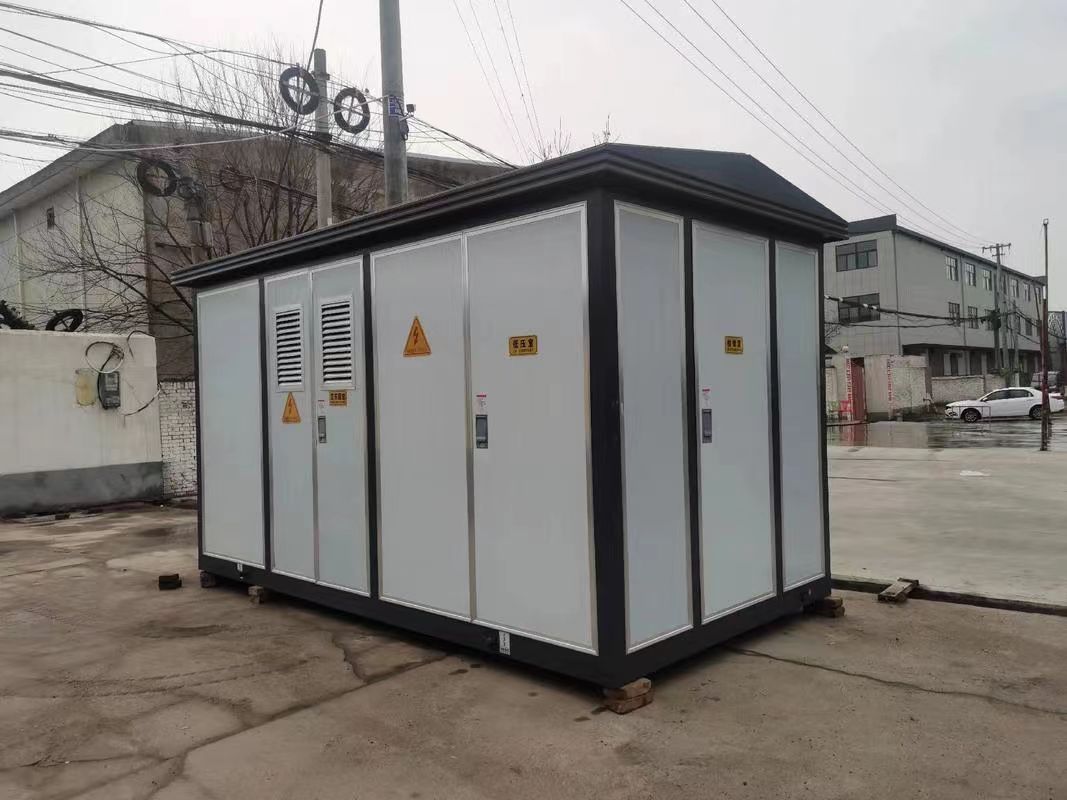
Box transformers have become an integral part of modern urban and commercial power distribution systems due to their compact, durable, and efficient design. As urban areas continue to grow, the demand for reliable and safe electrical power has never been higher. Box transformers are designed to meet these needs, offering several advantages that make them ideal for deployment in dense urban environments and commercial areas.
In this article, we’ll explore how box transformers benefit urban and commercial areas, contributing to both the safety and efficiency of modern electrical grids.
Why Are Box Transformers Ideal for Urban and Commercial Areas?
Urban and commercial areas present specific challenges in terms of space constraints, safety concerns, and environmental protection. Box transformers, with their enclosed, tamper-resistant design, offer a solution to these challenges by providing secure and efficient power distribution in areas where traditional open-frame transformers may not be suitable. Here’s how box transformers excel in these environments:
1. Space Efficiency
Urban and commercial areas often have limited space available for infrastructure. Traditional open-frame transformers require significant space for installation, which can be a challenge in densely populated regions.
Box transformers, however, are compact and self-contained, fitting easily into spaces where larger transformers might not be feasible. They can be installed in neighborhoods, industrial zones, and even underground vaults, helping to conserve valuable urban space.
Benefits:
- Ideal for city streets, commercial complexes, and high-density residential areas.
- Compact design allows for installation in areas with limited available land or rooftop space.
- Can be placed underground or in confined spaces, contributing to better urban aesthetics.
2. Enhanced Safety and Security
Safety is a top priority in urban and commercial environments, especially when dealing with high-voltage electrical equipment. Box transformers are housed in weatherproof, tamper-resistant enclosures that protect both the internal components of the transformer and the general public. This enclosure significantly reduces the risk of electrical accidents, fire hazards, and vandalism.
For example, box transformers can be locked and sealed, preventing unauthorized access or tampering. This feature is particularly important in urban areas, where transformer vandalism or unauthorized interaction can lead to service interruptions, equipment damage, or even accidents.
Benefits:
- Protective metal casing safeguards against weather, debris, and physical damage.
- Tamper-resistant design deters unauthorized access, enhancing security in public or high-traffic areas.
- Minimized risk of electrical hazards by enclosing live electrical components, preventing accidental contact.
3. Weather Resistance and Durability
Urban areas often experience extreme weather conditions such as rain, snow, and strong winds. Box transformers are built to withstand harsh environmental conditions, ensuring that the power distribution system remains functional even in the most demanding climates.
The metal enclosures of box transformers are typically constructed from weather-resistant materials such as steel or aluminum, providing protection against moisture, dust, and temperature fluctuations. This durability is essential for ensuring uninterrupted power supply in urban areas, where electrical reliability is critical.
Benefits:
- Weatherproof design ensures the transformer continues to function effectively during adverse weather conditions.
- Longer lifespan due to protection against environmental elements like rain, snow, and dust.
- Reduced maintenance needs compared to traditional transformers exposed to the elements.
4. Reliability and Low Maintenance
Urban areas require transformers that can operate reliably over long periods of time without frequent maintenance. Box transformers are designed for low-maintenance operation due to their enclosed nature. The metal casing helps prevent dust, dirt, and moisture from entering the transformer, reducing the need for frequent cleaning and inspection.
Additionally, many modern box transformers are equipped with advanced monitoring systems that provide real-time data on transformer performance. This allows for predictive maintenance, where potential issues can be detected before they result in failure.
Benefits:
- Less frequent maintenance due to protection from external contaminants.
- Long-lasting performance, reducing the total cost of ownership.
- Remote monitoring and diagnostics for early identification of potential problems, enabling proactive maintenance.
5. Noise Reduction
Urban and commercial areas are often densely populated, and the presence of noise can be a significant issue. Box transformers are generally quieter than traditional open-frame transformers, which helps reduce noise pollution in residential and commercial neighborhoods.
By containing the transformer’s operation within a sealed metal box, much of the transformer hum and other operational noise is contained, ensuring that the transformer does not become a nuisance to surrounding businesses or residents.
Benefits:
- Lower operational noise compared to open-frame transformers.
- Minimal impact on local communities with respect to noise pollution.
- Can be placed in sensitive environments where noise reduction is critical, such as residential areas and healthcare facilities.
6. Integration with Smart Grids
Modern cities and commercial facilities are increasingly moving toward smart grids, which utilize advanced technology to optimize energy distribution. Box transformers are well-suited for integration into these smart grids because they can be equipped with sensors that monitor parameters like temperature, load, and humidity.
With the Internet of Things (IoT) capabilities, box transformers can be part of an automated system that enables real-time monitoring and data collection. This helps utilities improve operational efficiency, reduce downtime, and better manage energy distribution across the grid.
Benefits:
- Integration with smart grid technologies for improved monitoring and control.
- Predictive maintenance based on real-time data, reducing the risk of failure.
- Increased energy efficiency through the ability to adjust transformer operation based on current demand.
7. Minimal Aesthetic Impact
Box transformers are often used in areas where visual aesthetics are a concern. Unlike traditional transformers that are often bulky and visually intrusive, box transformers can be designed to blend in with their surroundings. This is particularly important in commercial districts, historical areas, or residential neighborhoods, where the appearance of infrastructure may need to be carefully managed.
Benefits:
- Discrete appearance, blending with urban architecture.
- Customizable design to match surrounding aesthetics.
- Improved urban planning by integrating transformers into the infrastructure without compromising the visual appeal.
Applications in Urban and Commercial Areas
Box transformers are widely used in a variety of urban and commercial environments, including:
- Residential neighborhoods: Step down high-voltage power from utility grids to usable voltages for homes.
- Commercial buildings and complexes: Provide reliable electrical power for retail stores, office buildings, and mixed-use developments.
- Shopping malls: Ensure uninterrupted power for lighting, HVAC systems, escalators, and other services.
- Industrial areas: Step down high-voltage power for factories, warehouses, and other facilities requiring large amounts of electricity.
- Public infrastructure: Power traffic lights, street lights, and municipal buildings.
What Are the Advantages of Box Transformers in Industrial Applications?
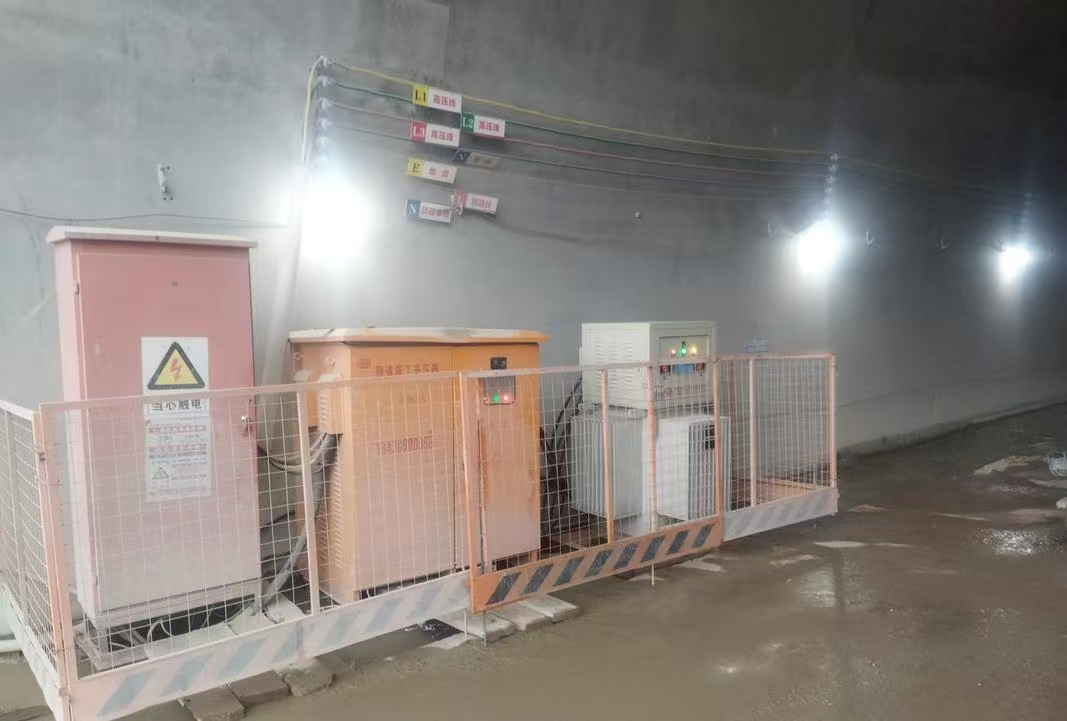
Box transformers have become increasingly popular in industrial applications due to their robust design, space-saving features, and enhanced operational efficiency. In industries where power reliability and safety are paramount, these compact and durable transformers offer numerous advantages.
In this article, we’ll delve into the key benefits of box transformers in industrial settings, discussing how they improve power distribution, safety, and overall efficiency.
Why Are Box Transformers Ideal for Industrial Applications?
Industrial environments often face specific challenges such as high power demands, limited space, and harsh operating conditions. Box transformers are designed to address these challenges effectively. Here’s how they contribute to industrial operations:
1. Space Efficiency in Dense Industrial Environments
Industrial facilities often need to manage large amounts of electrical power while working within a confined space. Traditional transformer installations, with their open-frame design, can be bulky and consume significant real estate. Box transformers, however, offer a compact solution that takes up minimal space without sacrificing performance.
Box transformers are typically housed in sealed metal enclosures, allowing them to fit in areas where conventional transformers might not be suitable. They can be installed in factories, production lines, and even underground vaults, optimizing space usage in crowded industrial zones.
Benefits:
- Space-saving design fits into areas with limited room for equipment.
- Modular configurations allow customization to specific industrial needs.
- Can be installed underground or in tight spaces, reducing the footprint of electrical infrastructure.
2. Enhanced Safety and Security
Safety is a significant concern in industrial environments, where high-voltage equipment and complex machinery are in constant operation. Box transformers are designed with safety features that help protect both the electrical components and the workers on-site.
The transformers’ weatherproof metal housing shields against physical damage, tampering, and environmental factors. Furthermore, many box transformers come with sealed enclosures that limit access to dangerous electrical components, reducing the risk of electrical accidents and fires. These features make box transformers particularly useful in high-risk industrial zones such as chemical plants, power plants, and mining facilities.
Benefits:
- Tamper-resistant design reduces the likelihood of unauthorized access or damage.
- Weather-resistant casings protect internal components from environmental factors like dust, moisture, and heat.
- Reduces risk of electrical accidents by enclosing live electrical parts, ensuring worker safety.
3. Durability and Reliability
Industrial operations often require equipment that can withstand harsh environments and operate continuously with minimal downtime. Box transformers are built with high-quality materials that ensure long-lasting performance even in demanding conditions.
The sealed enclosures prevent dust, moisture, and corrosive agents from entering the transformer, which helps extend its lifespan. Moreover, these transformers are designed to perform reliably in a wide range of temperatures, vibrations, and external impacts commonly found in industrial settings.
Benefits:
- Robust design ensures reliable performance in harsh conditions.
- Longer operational lifespan due to protection against contaminants like dust and moisture.
- Reduced downtime as the transformer is designed to operate with minimal maintenance.
4. Noise Reduction
Many industrial environments are already noisy due to machinery and equipment in operation. The noise generated by open-frame transformers can add to this, creating uncomfortable conditions for workers and even affecting sensitive equipment. Box transformers are designed to minimize operational noise, thanks to their sealed construction.
This reduction in noise is essential in industries such as healthcare, electronics manufacturing, and precision industries, where noise pollution can disrupt operations or affect the quality of work.
Benefits:
- Lower operational noise reduces noise pollution in sensitive industrial environments.
- Enhanced comfort for workers in environments that require low noise levels.
- Compliance with noise regulations in industries that are required to minimize noise emissions.
5. Energy Efficiency and Cost Savings
Box transformers are not only designed for durability and safety but also for energy efficiency. Their compact and sealed design ensures that energy losses are minimized, making them more efficient than traditional open-frame transformers.
Additionally, many box transformers are equipped with smart sensors and monitoring systems that track energy consumption and performance in real-time. This allows companies to identify potential inefficiencies, optimize energy usage, and reduce costs.
Benefits:
- Reduced energy losses due to efficient, sealed design.
- Enhanced monitoring capabilities for real-time energy tracking.
- Lower operating costs through energy optimization.
6. Integration with Automation and Smart Systems
Many modern industrial operations rely on automation and smart systems to improve efficiency and reduce human error. Box transformers are designed to integrate seamlessly with these advanced technologies. With the inclusion of IoT-enabled sensors and remote monitoring capabilities, these transformers can be part of a smart grid that allows for better control, predictive maintenance, and optimized energy distribution.
For example, a box transformer equipped with sensors can transmit data on voltage, temperature, and load status to a central monitoring system. This allows for predictive maintenance, where issues can be detected early, preventing failures and reducing downtime.
Benefits:
- Seamless integration with smart industrial systems for improved control and automation.
- Remote monitoring of transformer health and performance for predictive maintenance.
- Improved operational efficiency through data-driven decision-making.
7. Adaptability to Various Industrial Applications
Box transformers are versatile and adaptable to a variety of industrial applications. Whether it's powering heavy-duty machinery in a factory, providing power for lighting and HVAC systems in a commercial building, or stepping down voltage for sensitive equipment, box transformers can be customized to meet the specific requirements of any industrial setting.
These transformers can be designed with different voltage ratings, configurations, and power capacities to suit a wide range of industrial needs, making them highly flexible for diverse operations.
Benefits:
- Customizable design to suit specific industrial needs, whether for heavy machinery or low-power equipment.
- Multiple voltage options allow for use in a variety of settings, from small factories to large-scale industrial operations.
- Can be deployed in sensitive environments where specialized power needs are required.
8. Ease of Installation and Maintenance
Box transformers are easy to install, especially in areas where space is at a premium. The compact design allows for installation in tight spaces, and the sealed nature of the transformer ensures that external factors such as weather, dirt, and pollution don’t interfere with performance.
Additionally, the low maintenance requirements of box transformers make them highly cost-effective in the long run. The sealed enclosures reduce the need for cleaning and inspection, and many modern transformers are equipped with monitoring systems that can detect problems early, allowing for proactive maintenance before issues become critical.
Benefits:
- Quick installation in industrial areas with space constraints.
- Low maintenance and reduced operational costs.
- Proactive monitoring systems that prevent unplanned downtime and costly repairs.
Common Industrial Applications of Box Transformers
Box transformers are used in a variety of industrial settings, including:
- Manufacturing plants: Power heavy machinery, assembly lines, and robotic systems.
- Chemical plants: Power processing equipment and ensure the safe distribution of energy in hazardous environments.
- Mining operations: Provide reliable power for underground and open-pit mining equipment.
- Industrial warehouses: Supply electricity for lighting, HVAC systems, and automation.
- Power plants: Step down high-voltage power for distribution across industrial facilities.
How Do Box Transformers Enhance Safety and Accessibility in Residential Areas?
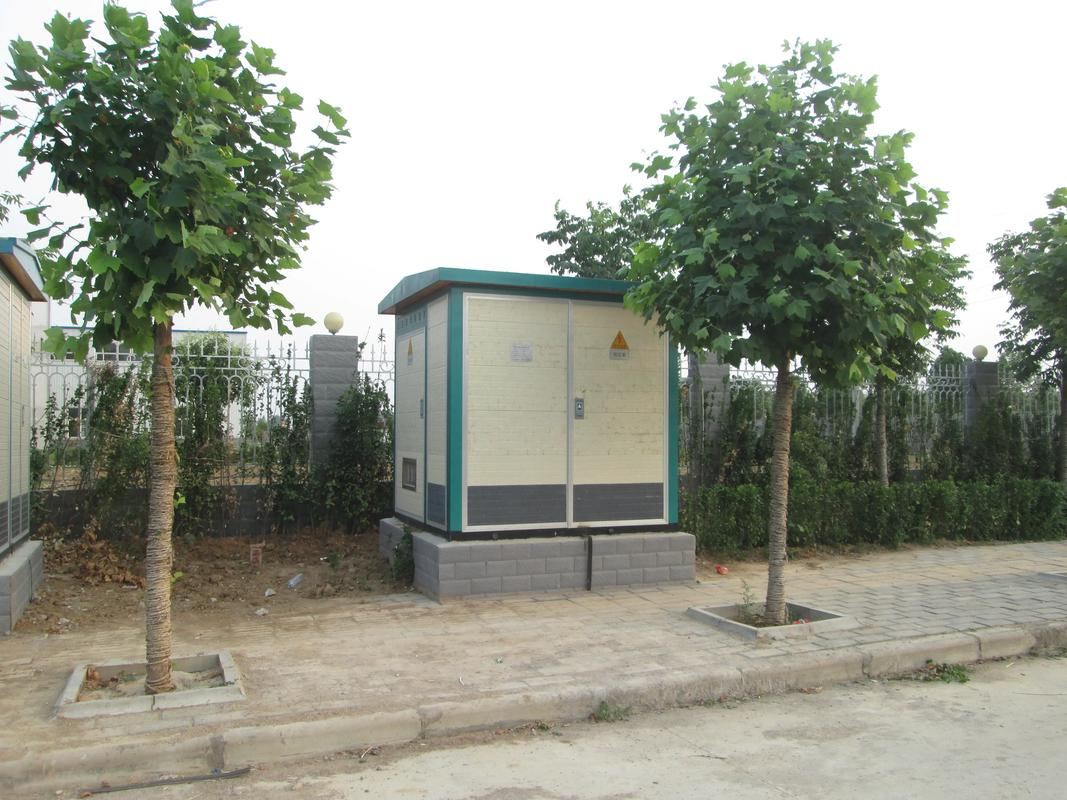
Box transformers are increasingly being used in residential areas to improve the distribution of electrical power. These compact, secure transformers are designed to meet the growing demands for efficient, safe, and reliable energy in suburban and urban communities. They provide not only effective power distribution but also help to enhance safety and improve accessibility for both residents and utility operators.
This article explores how box transformers contribute to the overall safety and accessibility of residential neighborhoods, ultimately ensuring a more reliable and safer electrical grid.
Why Are Box Transformers Ideal for Residential Areas?
In residential areas, electrical reliability and safety are paramount. Box transformers are an ideal solution for these settings due to their efficient design and robust features. Here’s how box transformers are particularly beneficial in residential settings:
1. Enhanced Safety with Sealed, Tamper-Resistant Enclosures
One of the most significant advantages of box transformers is their tamper-resistant design. In residential neighborhoods, the safety of the public is a top priority, especially in areas where children or pets may be nearby. Traditional transformers, with exposed components, pose a safety risk due to their live electrical parts. In contrast, box transformers are housed in sealed metal enclosures that prevent access to the internal components.
This sealed casing ensures that only authorized personnel can service or inspect the transformer, reducing the likelihood of accidents, electrical shocks, or even sabotage.
Benefits:
- Tamper-resistant and weather-proof enclosures protect the transformer from unauthorized access.
- Prevents electrical accidents by isolating dangerous parts from the surrounding environment.
- Enhanced protection for children, pets, and curious individuals.
2. Compact Design for Limited Residential Space
Residential areas are often space-constrained, especially in urban or suburban environments. Box transformers are compact in size and can be installed in areas where traditional, larger transformers would not be feasible. These transformers can fit in small utility vaults or beneath residential streets, helping to keep the visual impact minimal and preserving the aesthetic of neighborhoods.
Box transformers can also be installed in underground vaults or on discrete corners, which ensures that they do not dominate the landscape or cause unnecessary obstruction to the area’s flow.
Benefits:
- Compact design allows installation in confined spaces, reducing the need for large equipment and outdoor substations.
- Minimal visual impact, preserving the aesthetics of residential areas.
- Can be located underground or in less disruptive spaces, ensuring efficient urban planning.
3. Protection from Environmental Factors
Residential areas are often subjected to varying weather conditions, from heavy rain to snowstorms and extreme temperatures. Box transformers are designed with robust weatherproof casings that protect them from external elements, such as rain, wind, and dust. The sealed enclosures ensure that the transformer’s internal components remain intact and operational, even in the most challenging environmental conditions.
In regions prone to humidity or extreme heat, these transformers can be fitted with cooling mechanisms to maintain optimal performance and prevent overheating. The protection against environmental factors enhances the reliability and safety of electrical distribution, reducing the chances of transformer failure due to external conditions.
Benefits:
- Weather-resistant and sealed enclosures protect the transformer from environmental damage.
- Resilient to extreme weather conditions, ensuring reliable service year-round.
- Reduced risk of failures caused by environmental factors, improving grid stability.
4. Improved Accessibility for Maintenance and Repairs
Box transformers are designed not only for safety but also for ease of maintenance and repair. Unlike traditional transformers, which may require specialized equipment to access or service, box transformers are more user-friendly. Their sealed design makes it easier for utility workers to perform routine inspections or repairs without having to navigate through complex or dangerous setups.
The modular design of box transformers allows for faster access to key components, ensuring that repair or maintenance operations are both efficient and safe. In residential areas where access is often limited, the ease of maintenance ensures that transformer issues can be dealt with promptly without disrupting the surrounding community.
Benefits:
- Easy access for utility workers during inspections and repairs, reducing service disruptions.
- Simplified maintenance operations reduce downtime and keep the transformer in good working condition.
- Quick and safe repairs minimize inconvenience to local residents.
5. Reduced Noise Pollution
Another common issue with traditional transformers is the noise they produce during operation. This can be a significant nuisance in residential areas, where noise levels are typically lower than in industrial environments. Box transformers, however, are designed to operate with low noise levels due to their sealed design and efficient internal components.
This design ensures that the transformer operates silently, allowing for the continuous distribution of electrical power without disturbing the peace of residential neighborhoods. Reduced noise pollution improves the quality of life for residents, especially in areas where quiet environments are essential.
Benefits:
- Low noise emissions from box transformers make them suitable for residential areas.
- Improved quality of life for residents, as there are no intrusive noise disturbances.
- Ideal for sensitive environments like schools, hospitals, or family-oriented communities.
6. Minimization of Fire Hazards
Electrical equipment in residential areas poses inherent fire risks if not properly maintained or if failures occur. Box transformers reduce this risk significantly with their fire-resistant enclosures and insulation materials. The sealed casing not only prevents external contaminants like water and dust from entering, but it also reduces the potential for electrical fires.
The enclosed design helps contain potential issues such as overheating or short circuits, limiting the risk of a fire hazard spreading. This is particularly important in residential areas where fire safety regulations are stringent.
Benefits:
- Fire-resistant casings reduce the potential for fires in the event of electrical failures.
- Containment of faults prevents the spread of fires and ensures safe operation in densely populated residential areas.
- Compliance with fire safety standards, ensuring safer electrical infrastructure.
7. Integration with Smart Grid Technology
In modern residential areas, the use of smart grid technology is becoming increasingly prevalent. Box transformers can be integrated into these systems, allowing for real-time monitoring and data collection. Smart sensors embedded in the transformer enable utility operators to monitor performance, detect potential issues, and perform predictive maintenance.
This real-time data collection allows for better management of energy distribution, reducing power losses and improving the overall efficiency of the electrical grid. With this technology, box transformers contribute to the intelligent management of electrical systems, which benefits both residential consumers and utility providers.
Benefits:
- Real-time monitoring improves the efficiency and reliability of power distribution.
- Predictive maintenance reduces downtime and potential disruptions.
- Enhanced grid management leads to better energy use and reduced power outages.
What Benefits Do Box Transformers Offer in Remote and Off-Grid Locations?
Powering remote and off-grid locations presents unique challenges due to the lack of traditional infrastructure, geographical isolation, and often harsh environmental conditions. For these areas, box transformers offer a practical solution for efficient, safe, and reliable power distribution. These compact and robust transformers are ideal for regions that are far from centralized power grids and require specialized equipment to meet their energy needs.
In this article, we explore the key benefits that box transformers bring to remote and off-grid locations, helping to improve power reliability, reduce maintenance needs, and ensure safe operations.
Why Are Box Transformers Ideal for Remote and Off-Grid Locations?
Off-grid areas, whether rural, industrial, or temporary installations, need electrical infrastructure that is reliable, cost-effective, and resilient. Box transformers meet these needs through their compact size, robust design, and low maintenance requirements. Let’s break down how box transformers offer substantial advantages in these settings.
1. Compact and Modular Design
One of the primary advantages of box transformers is their compact design, which is perfect for areas where space is limited or infrastructure is difficult to access. Unlike traditional transformer stations that may require large plots of land and significant infrastructure, box transformers are self-contained in a modular unit that requires little space. This makes them ideal for off-grid locations where real estate can be sparse or expensive.
The modular nature of box transformers also means they can be installed quickly and easily, with minimal disruption to the surrounding area. This quick deployment is critical in remote or emergency situations, where the ability to install and activate power systems quickly can make a significant difference.
Benefits:
- Compact design allows for quick and easy installation in limited spaces.
- Modular setup ensures flexibility and scalability for different locations.
- Reduced land requirements, especially important in remote areas where real estate is limited or costly.
2. Durability and Weather Resistance
Remote and off-grid locations are often exposed to extreme weather conditions, such as heavy rain, snow, heat, wind, or dust storms. Box transformers are designed with weather-resistant casings that protect the internal components from these environmental stressors. Their sealed enclosures prevent dirt, moisture, and other contaminants from entering, ensuring the transformer operates effectively even in harsh climates.
Additionally, these transformers are often equipped with corrosion-resistant materials, helping to ensure a longer lifespan, especially in areas with high humidity, salt, or dust exposure, such as coastal or desert environments. This durability significantly reduces the need for frequent repairs or replacements, which can be expensive and time-consuming in remote areas.
Benefits:
- Weatherproof enclosures protect the transformer from rain, snow, and dust.
- Corrosion-resistant materials extend the life of transformers in harsh environments.
- Reduced maintenance needs, saving both time and money for remote locations.
3. Reduced Risk of Theft and Vandalism
In remote locations, the risk of theft or vandalism of electrical equipment is often higher, as transformers and other infrastructure may be far from regular surveillance or law enforcement. Box transformers, with their secure, sealed enclosures, are built to resist tampering, theft, and damage from vandalism. This is particularly important in regions with low population density or where public infrastructure may not receive constant monitoring.
Because box transformers are self-contained and inaccessible without proper tools, unauthorized access to the transformer is minimized, improving both security and reliability. Additionally, the transformer’s compact size and low profile make it less of a target for thieves compared to larger, more conspicuous transformer stations.
Benefits:
- Tamper-resistant design reduces the risk of theft and vandalism.
- Reduced risk of damage from unauthorized access, improving long-term security.
- Less conspicuous appearance compared to larger transformer stations, making it a less likely target.
4. Low Maintenance and Easy Servicing
In remote locations, the ability to perform routine maintenance and repairs quickly is often constrained by limited access and high transportation costs. Box transformers are specifically designed for low maintenance, thanks to their sealed, robust design and fewer moving parts. Their modular construction ensures that parts can be replaced or serviced with minimal downtime.
Moreover, many box transformers now include remote monitoring systems that allow utility operators to monitor the health of the transformer without having to send personnel to the site. This predictive maintenance helps to identify issues before they escalate into major problems, ensuring that the transformer remains operational for longer periods with fewer repairs required.
Benefits:
- Minimal maintenance needs due to rugged design and sealed construction.
- Remote monitoring capabilities reduce the need for on-site inspections.
- Predictive maintenance reduces the likelihood of sudden failures or expensive repairs.
5. Integration with Off-Grid Power Sources
For off-grid locations that rely on alternative energy sources, such as solar power, wind energy, or hydropower, box transformers offer an excellent way to connect these renewable energy sources to local electrical networks. They can handle variable energy inputs and transform the electricity from low to high voltage levels to ensure efficient distribution.
Additionally, box transformers are often used to store energy during periods of excess production, making them ideal for locations that rely on intermittent energy sources. Their versatility in handling different types of power inputs makes them a critical component of off-grid renewable energy systems.
Benefits:
- Compatible with renewable energy systems, enabling integration with solar, wind, and hydroelectric power sources.
- Flexible design allows the transformer to handle fluctuating energy inputs.
- Energy storage capabilities help stabilize power distribution in off-grid areas.
6. Cost-Effectiveness
Remote and off-grid locations often face higher costs for infrastructure, installation, and ongoing maintenance. Box transformers are cost-effective solutions for power distribution because they are self-contained, modular, and require fewer materials for installation compared to traditional transformer stations. Their low maintenance needs and durability also mean that overall operating costs are significantly reduced over the lifespan of the equipment.
Moreover, their compact size and ease of deployment reduce installation and transportation costs, which are often significant when dealing with remote or hard-to-reach areas. The long-lasting nature of box transformers also ensures that their initial investment is spread over a long period, making them a financially viable option for off-grid locations.
Benefits:
- Cost-effective installation and maintenance due to the compact design and modular components.
- Lower transportation costs due to the transformer’s smaller size and ease of deployment.
- Long-term savings on maintenance and operational costs, enhancing overall value.
7. Sustainability and Environmental Impact
In remote and off-grid locations, the environmental impact of energy distribution systems is a growing concern. Box transformers, with their energy-efficient designs and reduced environmental footprint, contribute to sustainability. They minimize the use of harmful chemicals, hazardous materials, and waste products during their operation, making them a more environmentally friendly choice for off-grid power systems.
Moreover, box transformers are often made from recyclable materials, which further reduces their environmental impact. Their ability to function with renewable energy sources also aligns with sustainable energy goals, helping remote areas achieve energy independence while minimizing their reliance on fossil fuels.
Benefits:
- Energy-efficient operation reduces the overall environmental impact of power distribution.
- Use of recyclable materials reduces waste and promotes sustainability.
- Supports renewable energy integration, helping remote areas transition to greener energy sources.
How Do Box Transformers Improve Energy Efficiency and Reduce Transmission Losses?
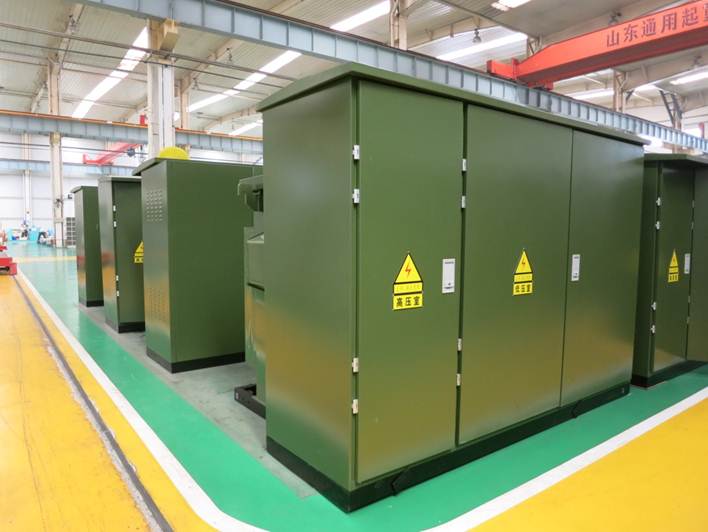
In modern power distribution networks, improving energy efficiency and reducing transmission losses are critical priorities. Box transformers, known for their compact design and robust construction, play an integral role in optimizing power distribution, particularly in terms of energy loss reduction. They are increasingly being used in both urban and industrial settings where efficient energy transmission is crucial to reducing overall costs and environmental impact.
In this article, we explore how box transformers contribute to energy efficiency and transmission loss reduction, helping utilities and businesses achieve greater sustainability, cost savings, and reliability in their electrical systems.
How Box Transformers Contribute to Energy Efficiency
Box transformers are designed with advanced technologies and engineering features that optimize electrical energy conversion and reduce losses. Here are the key ways in which they enhance energy efficiency:
1. Optimized Voltage Conversion
One of the primary functions of a transformer is to convert voltage from one level to another. Box transformers are engineered for precise voltage regulation, ensuring that electrical energy is transmitted efficiently without unnecessary fluctuations or losses. These transformers are equipped with high-quality core materials, such as silicon steel, which help minimize core losses (eddy currents and hysteresis losses) during the energy conversion process.
Box transformers are also designed with high-efficiency windings, which further minimize copper losses—the energy lost due to resistance in the transformer windings. By reducing these internal losses, box transformers ensure that a higher percentage of the input energy is effectively delivered to the end users.
Benefits:
- High-quality core materials and efficient windings reduce internal losses.
- Precise voltage conversion ensures minimal energy waste in power transmission.
- Optimized core design leads to reduced eddy current and hysteresis losses.
2. Low No-Load Losses
No-load losses, also known as core losses, occur when the transformer is energized but not delivering power to a load. In traditional transformers, no-load losses can be significant, especially during periods when the transformer is idle or underutilized. Box transformers, however, are designed to operate with low no-load losses by using high-grade materials and optimized designs that ensure energy is not wasted when the transformer is not actively transferring power. This reduces the total energy consumption and enhances overall operational efficiency.
Benefits:
- Lower no-load losses ensure minimal energy waste during idle periods.
- Optimized transformer design reduces the energy lost while not under load.
- Energy-efficient design contributes to greater overall system efficiency.
3. Compact and Modular Design
Box transformers are built with a compact design, which not only saves space but also reduces the distance over which energy must be transmitted. Shorter transmission paths result in lower losses, as the resistance encountered in the transformer’s windings is directly proportional to the length of the wire. By placing the transformer closer to the end-users and utilizing compact modular units, the transformer can efficiently handle the required voltage conversion while maintaining minimal transmission losses.
Additionally, the modular design of box transformers allows for easy scalability. As energy demand increases, additional modules can be added without major infrastructure changes. This flexibility ensures that energy transmission remains efficient even as load conditions change over time.
Benefits:
- Shorter transmission distances result in lower energy loss.
- Compact design reduces internal transmission losses.
- Modular systems allow for easy expansion while maintaining energy efficiency.
4. Reduced Core Saturation and Improved Load Management
Box transformers are engineered to prevent core saturation, which occurs when the transformer’s core material becomes magnetically saturated, leading to a significant increase in energy losses. Box transformers typically feature high-quality magnetic materials and advanced core designs, which ensure that the transformer operates efficiently under varying load conditions.
Moreover, box transformers are often designed with better load management capabilities, which helps them adjust to changes in energy demand without causing significant voltage fluctuations. This improves load factor, ensuring that energy is transmitted efficiently with fewer losses over the entire grid system.
Benefits:
- Prevention of core saturation improves energy efficiency.
- Advanced load management enhances transformer performance under different conditions.
- Improved load factor reduces overall energy wastage and enhances efficiency.
How Box Transformers Help Reduce Transmission Losses
Transmission losses occur due to the resistance of the transmission lines and components such as transformers. In the case of box transformers, these systems are designed to minimize losses at every stage of the electrical energy distribution process.
1. Enhanced Load Distribution and Voltage Regulation
Box transformers are designed to optimize load distribution, ensuring that energy is efficiently delivered without significant voltage dips or spikes. Proper voltage regulation prevents the system from overloading, which can cause resistive losses in the system’s wiring and components. This level of regulation reduces the need for frequent voltage adjustments, which can lead to additional energy waste.
By ensuring that power is distributed evenly and efficiently across the network, box transformers reduce the overall transmission distance over which energy is distributed, minimizing energy losses as it travels from the generation source to the end user.
Benefits:
- Optimized load distribution prevents unnecessary voltage drops.
- Efficient voltage regulation reduces energy waste in transmission.
- Reduces the risk of overloading, which minimizes losses during peak demand periods.
2. Efficient Power Transfer with Lower Impedance
Impedance is a key factor that influences the amount of energy lost in a transformer. High impedance results in higher energy losses during power transmission. Box transformers are designed with lower impedance values and high-performance windings, which improve the power transfer efficiency. By reducing the impedance, energy is transmitted more efficiently through the system with lower losses in the wires and components.
Benefits:
- Low impedance design reduces energy losses in the power transmission system.
- Efficient power transfer improves overall system efficiency and reduces costs.
- Enhanced performance of high-efficiency transformers ensures reliable energy delivery with minimal loss.
3. Reduction of Harmonics
Harmonics are unwanted frequencies in the electrical system that can cause additional losses in transformers, especially when operating at non-ideal loads. Box transformers are designed to minimize harmonic distortion by using advanced circuitry and high-quality core materials. This ensures that the transformer operates at maximum efficiency and reduces the heat buildup that could otherwise result from harmonic distortion.
By reducing the harmonic content in the system, box transformers help ensure that the transmission lines and transformers experience lower energy losses and better overall performance.
Benefits:
- Reduced harmonic distortion ensures smoother operation and fewer losses.
- Improved power quality reduces additional strain on transmission systems.
- Decreased heat generation from harmonics reduces the likelihood of transformer degradation.
4. Integration with Smart Grid Technologies
In many cases, box transformers are equipped with smart grid integration capabilities that enable real-time monitoring and dynamic load balancing. This integration allows the system to automatically adjust energy flows based on demand, ensuring that energy is always transmitted efficiently and that transmission losses are minimized. By incorporating advanced sensors and data analytics, smart box transformers provide predictive maintenance and real-time fault detection, allowing utilities to quickly address any issues that might lead to energy losses.
Benefits:
- Smart grid integration ensures optimal power distribution and load balancing.
- Predictive maintenance reduces system inefficiencies and transmission losses.
- Real-time fault detection prevents energy losses caused by malfunctions.
Conclusion
Box transformers provide several distinct advantages in a variety of specific applications, making them a preferred choice for modern electrical distribution networks. In urban and commercial areas, their compact size and aesthetic design make them perfect for integration into crowded environments where space is at a premium. They provide safe and reliable power while blending seamlessly with the surrounding infrastructure.
In industrial applications, box transformers offer robustness, high capacity, and reliable operation in harsh conditions, ensuring consistent power supply. Similarly, in residential areas, they are designed for minimal maintenance and safe operation, making them convenient for residential and mixed-use developments.
For remote or off-grid locations, box transformers are valued for their ease of installation, mobility, and ability to perform effectively without access to extensive infrastructure. They are also efficient in reducing transmission losses by providing localized voltage conversion, which minimizes the need for long-distance power transmission.
Overall, box transformers are highly adaptable, making them ideal for diverse applications and environments. Their flexibility in design and function ensures that utilities can maintain reliable, safe, and efficient power distribution in a variety of settings, all while maximizing space utilization and minimizing operational costs.
FAQ
Q1: What makes box transformers advantageous in specific applications?
A1: Box transformers are highly versatile and compact, making them ideal for applications where space is limited, such as urban areas, industrial facilities, and commercial buildings. Their enclosed design enhances safety, reduces the risk of accidents, and ensures reliable operation in diverse environments.
Q2: How does the compact design of box transformers benefit certain applications?
A2: The compact design of box transformers allows for easy installation in confined spaces, such as residential areas, factories, and transportation networks. Their smaller footprint reduces the need for large installation areas, making them a practical solution in environments where space is a premium.
Q3: In what applications do box transformers provide enhanced safety?
A3: Box transformers are particularly beneficial in applications requiring high safety standards, such as urban power grids, mining sites, and industrial plants. Their enclosed construction minimizes the risk of electrical hazards, while ensuring that components remain protected from environmental factors like dust, moisture, or physical damage.
Q4: How do box transformers improve reliability in power distribution systems?
A4: Box transformers are designed to provide consistent and reliable power in various environments. Their robust construction and effective cooling systems enhance durability, reducing downtime and the need for frequent maintenance. This reliability is crucial in mission-critical applications, such as hospitals, data centers, and transportation systems.
Q5: What are the energy efficiency benefits of box transformers in specific applications?
A5: Box transformers are known for their energy-efficient design, which minimizes energy losses and improves overall system efficiency. They are particularly beneficial in applications where reducing power wastage is a priority, such as renewable energy integration, urban electricity distribution, and commercial energy management systems.
References
"Box Transformers: Advantages in Power Distribution" - https://www.transformertech.com/box-transformer-advantages - Transformer Tech
"Compact and Reliable: The Role of Box Transformers" - https://www.electrical4u.com/compact-box-transformers - Electrical4U
"Why Box Transformers Are Ideal for Urban Power Systems" - https://www.powergrid.com/box-transformers-urban-systems - PowerGrid
"Box Transformers: Ensuring Safety and Efficiency in Industrial Applications" - https://www.sciencedirect.com/topics/engineering/box-transformers - ScienceDirect
"Applications of Box Transformers in Commercial and Residential Areas" - https://www.researchgate.net/box-transformer-applications - ResearchGate
"The Benefits of Box Transformers for Power Systems" - https://www.powermag.com/box-transformer-benefits - Power Magazine
"Improving Reliability in Critical Systems with Box Transformers" - https://www.smartgridnews.com/reliable-box-transformers - Smart Grid News
"Energy-Efficiency Gains with Box Transformers" - https://www.energycentral.com/c/ee/energy-efficiency-box-transformers - Energy Central


